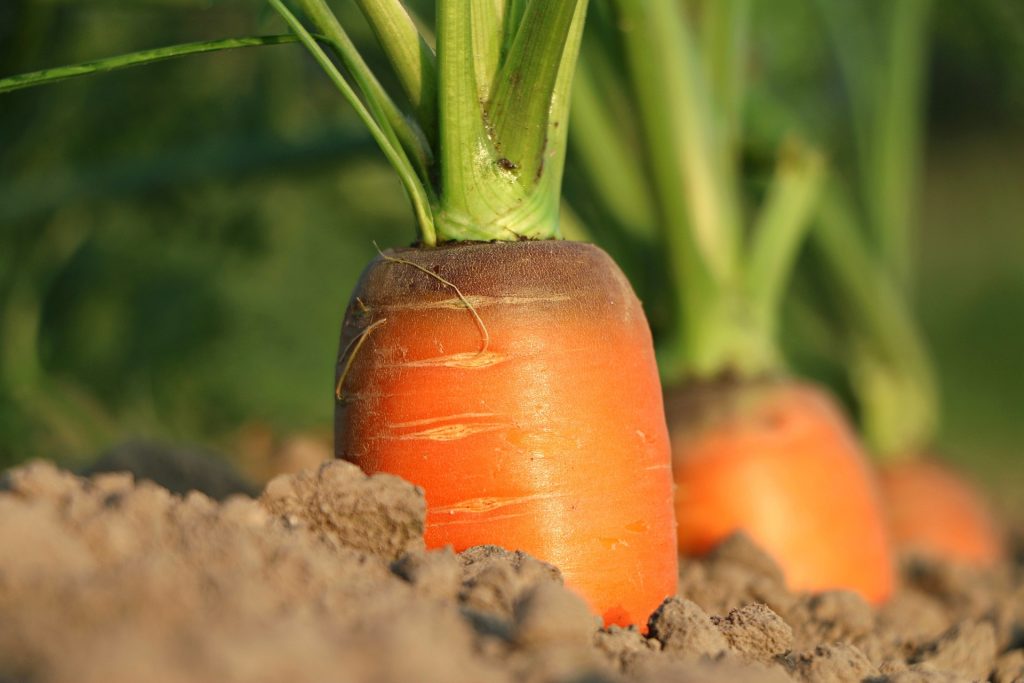Growing Carrots
What’s not to like about carrots? They have been my favourite food since I was a kid, they’re full of goodness, they just about look after themselves and they offer a veritable bounty for the space they take up in your garden.
Carrots have been grown around the world for thousands of years, but the common orange varieties have only been in favour in relatively recent times. In Europe, white and yellow varieties were preferred until a few centuries ago, and even now purple carrots are more popular in Afghanistan and pink carrots are de rigeur in India.
There are many types of carrots available, but it may be best to let your soil choose for you. Long-rooted varieties are best suited to light, friable soil; if your soil is stony, clayey, shallow or doesn’t drain well, try short-root types.
Carrots are a root vegetable, storing food reserves underground and are very hardy. The best time to sow is in spring to early summer (September-January). For a continuous harvest, plant a few rows of carrots every 4-5 weeks.

Site and soil
The trick to success with carrots is in the soil. They prefer a light, loose, fertile soil and a sunny spot.
Start preparing your soil in late winter or early spring until it has a fine crumbly texture. It’s best not to add organic material as it makes the soil too rich for the seeds. If you really need to, make sure it’s evenly applied and incorporated well before planting.
Planting
Carrots don’t like transplanting – direct seeding is the best option. Carrot seeds are very small, but to give them the best chance (and to save yourself time later), plant them as thinly as possible. To help with this, try mixing the seed with sand, or try planting carrot and radish seeds together – radishes mature first and harvesting automatically thins the carrot crop.
Make a trench 2-3 cm deep and plant seeds about 2-5 cm apart, covering the seeds once planted. This helps with thinning, weeding and mulching later.
Carrots take 10-14 days to germinate and in this time, their soil needs to be kept moist. A piece of shade cloth over the area is often used to retain moisture until the plants germinate. A light layer of dry grass clippings is an alternative.
Cultivating
Carrots need little attention in their growing period, although they need to be kept watered or they will produce woody coarse roots.
Carrots each need 2-5cm space to grow, so thinning may still be necessary. This is the tricky part, because young carrot foliage can be very weedy-looking!
Harvesting
Carrots are ready for harvest in 12-16 weeks, depending on the variety. As soon as they’re big enough to eat they can be pulled out of the ground.
In cold areas like Canberra, they can be stored in the ground over winter as long as they are protected from frost. This tends to sweeten the flavour.
Problems
Carrots don’t have major pest or disease problems and crop rotation will keep most of these at bay. Carrots will do best following a greedy crop such as a brassica or lettuce. They aren’t keen to follow celery, parsnips or parsley. Carrot fly is attracted by the smell of crushed foliage and may be a problem if carrot tops are left in the garden bed after thinning or harvesting.
